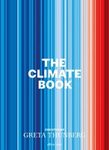![The Climate Demon The Climate Demon]()
Click to have a closer look
About this book
Contents
Customer reviews
Biography
Related titles
Recommended titles
About this book
Climate predictions – and the computer models behind them – play a key role in shaping public opinion and our response to the climate crisis. Some people interpret these predictions as 'prophecies of doom' and some others dismiss them as mere speculation, but the vast majority are only vaguely aware of the science behind them. The Climate Demon gives a balanced view of the strengths and limitations of climate modeling. It covers historical developments, current challenges, and future trends in the field. The accessible discussion of climate modeling only requires a basic knowledge of science. Uncertainties in climate predictions and their implications for assessing climate risk are analyzed, as are the computational challenges faced by future models. The Climate Demon concludes by highlighting the dangers of climate 'doomism', while also making clear the value of predictive models, and the severe and very real risks posed by anthropogenic climate change.
Contents
List of figures
Preface
Acknowledgements
Introduction
Part I. The Past
1. Deducing weather: The dawn of computing
2. Predicting weather: The butterfly and the tornado
3. The greenhouse effect: Goldilocks and the three planets
4. Deducing climate: Smagorinsky's laboratory
5. Predicting climate: Butterflies in the greenhouse
6. The ozone hole: Black swan at the polar dawn
7. Global warming: From gown to town
Part II: The Present
8. Occam's razor: The reduction to simplicity
9. Constraining climate: A conservative view of modeling
10. Tuning climate: A comedy of compensating errors
11. Occam's beard: The emergence of complexity
12. The Hansen paradox: The red Queen's race of climate modeling
13. The Rumsfeld matrix: Degrees of knowledge
14. Lost in translation
15. Taking climate models seriously, not literally
Part III. The Future
16. Moore's law: To exascale and beyond
17. Machine learning: The climate imitation game
18. Geoengineering: Reducing the fever
19. Pascal's wager: Hedging our climate bets
20. Moonwalking into the future
Epilogue
Glossary
Selected Bibliography
References
Index
Endnotes
Customer Reviews
Biography
R. Saravanan is Head of the Department of Atmospheric Sciences at Texas A&M University. He is a climate scientist with a background in physics and fluid dynamics and has been a lead researcher using computer models of the climate for over thirty years. He built an open-source simplified climate model from scratch and has worked on complex models run on the world's most powerful supercomputers. He has worked with scientists at multiple climate modelling centres: the Geophysical Fluid Dynamics Laboratory (GFDL) in Princeton; the UK Universities Global Atmospheric Modelling Programme (UGAMP) in Cambridge; and the National Center for Atmospheric Research (NCAR) in Boulder, Colorado. Saravanan has served on national and international committees on climate science, including the National Research Council (NRC) Committee on the Assessment of Intraseasonal to Interannual Climate Prediction and Predictability, and the Science Steering Committee of the Prediction and Research Moored Array in the Atlantic (PIRATA). He recently helped create the TED-Ed animated short, 'Is the weather actually becoming more extreme?'.





































